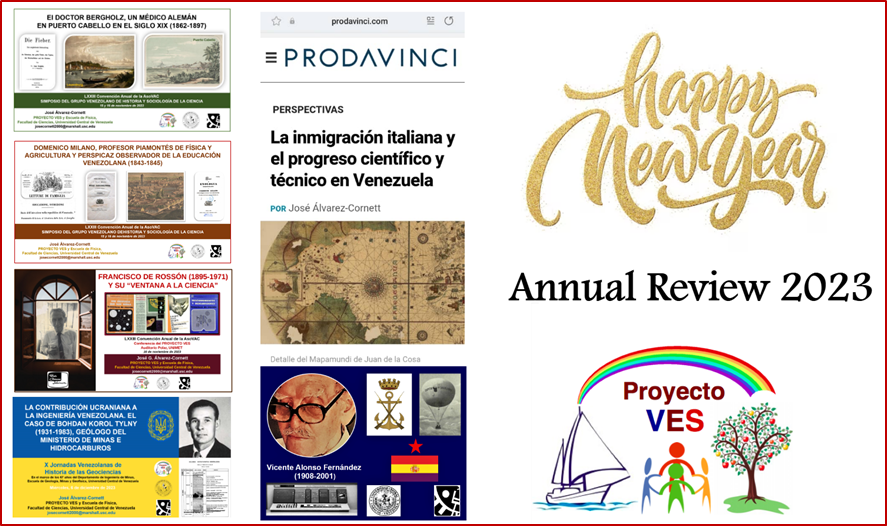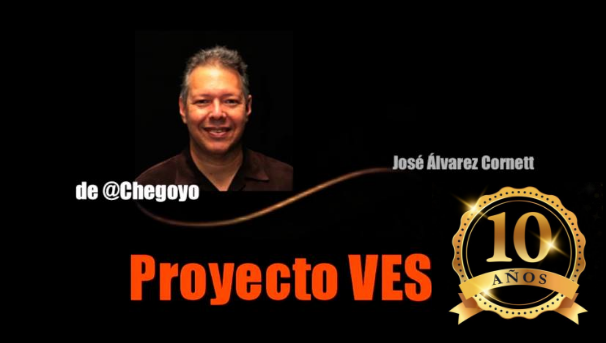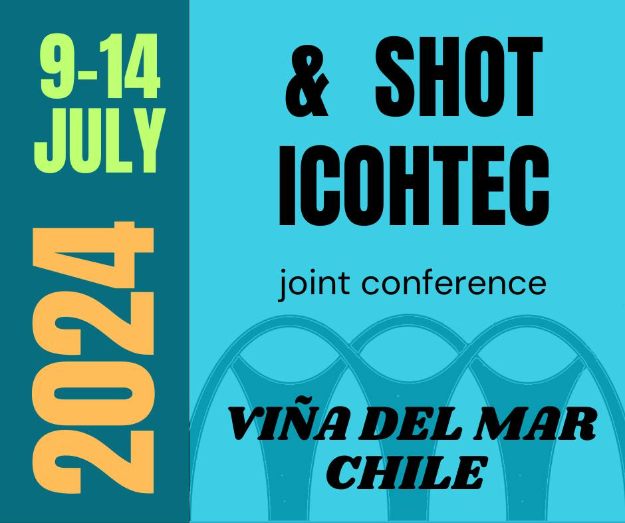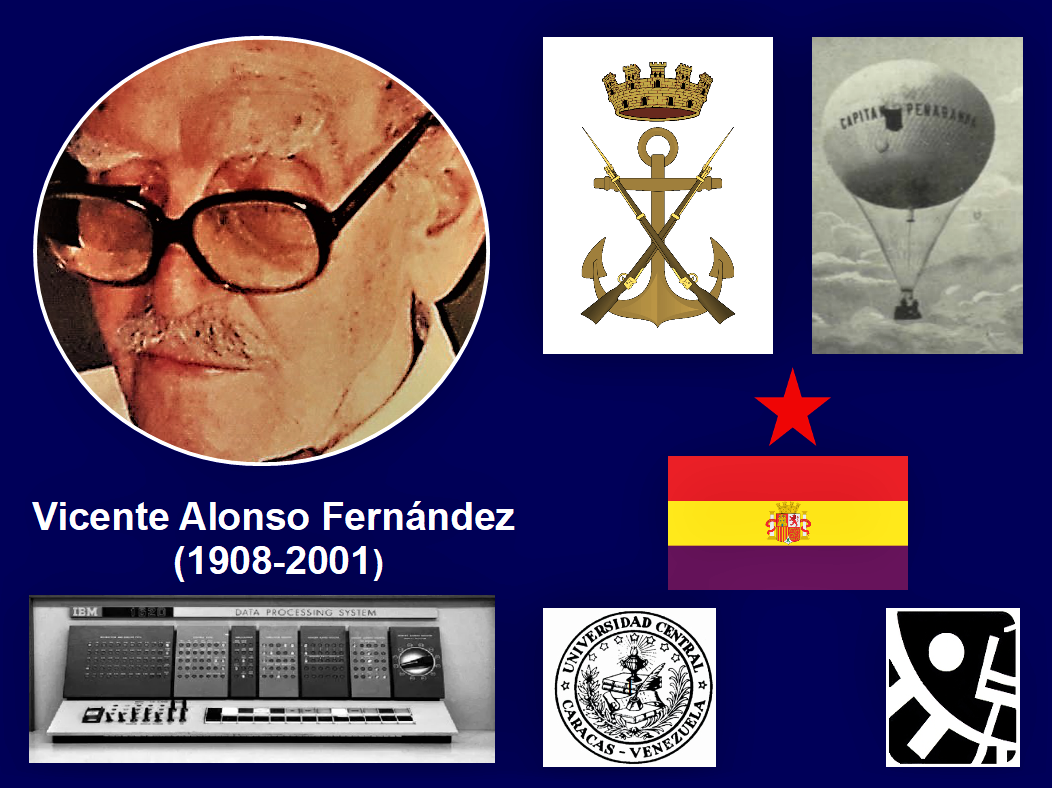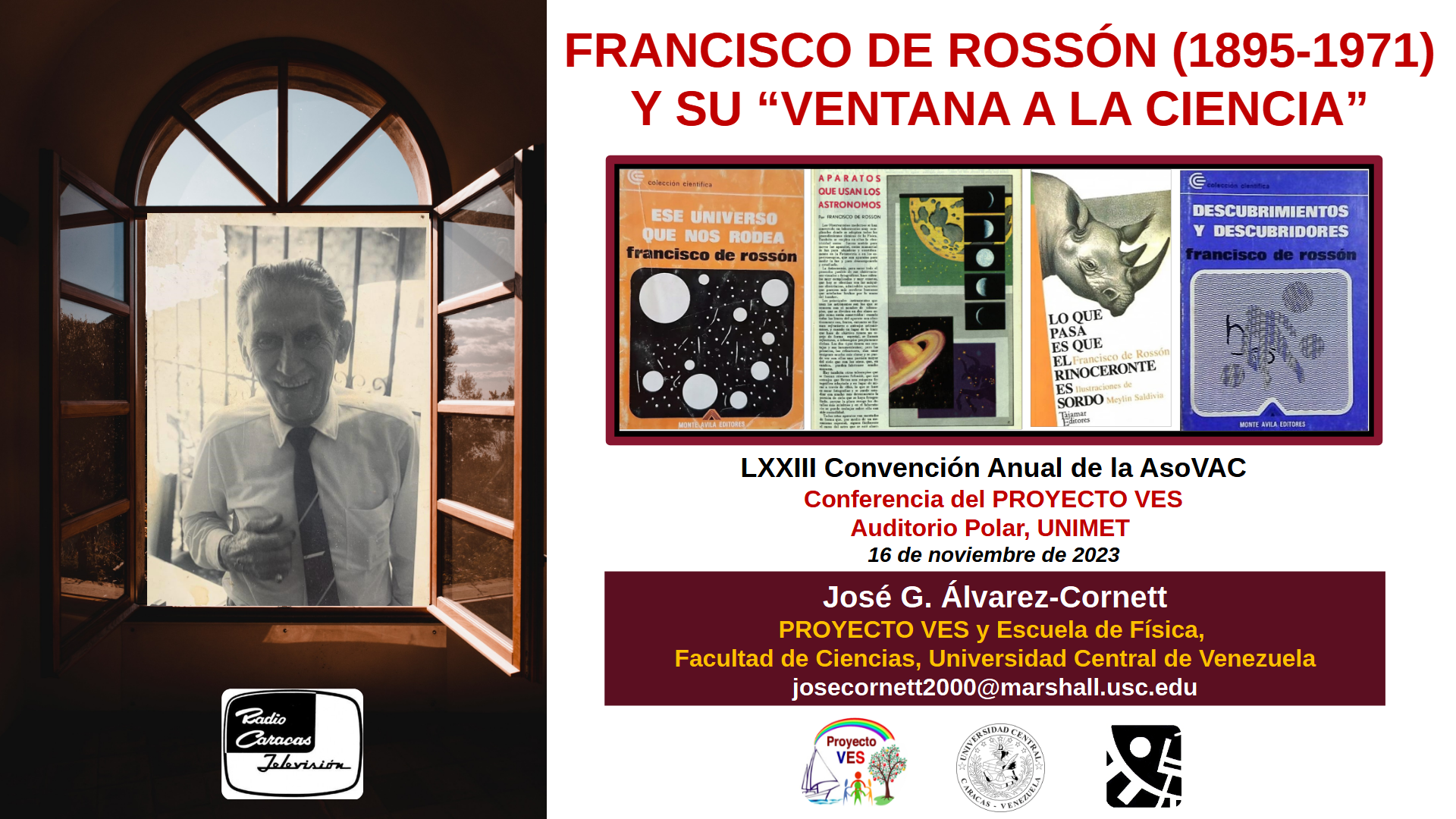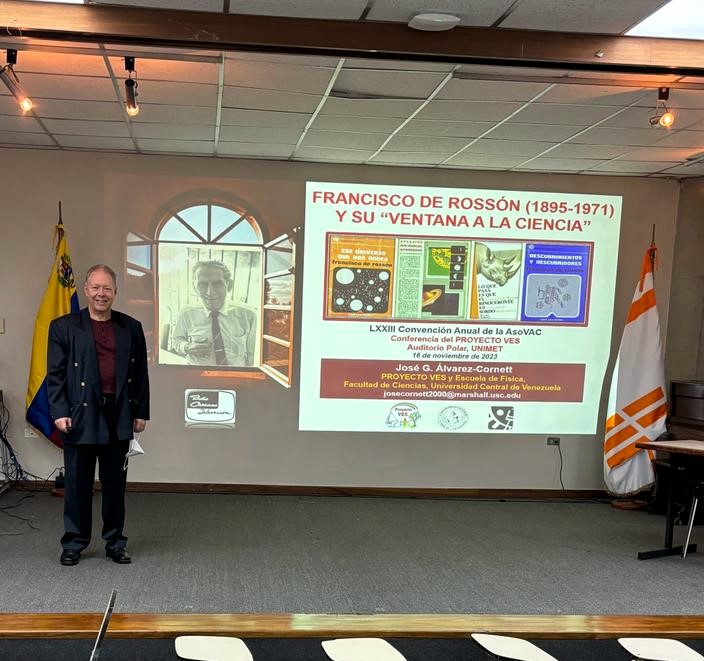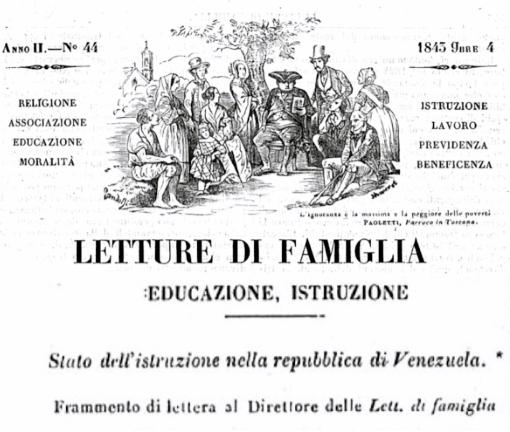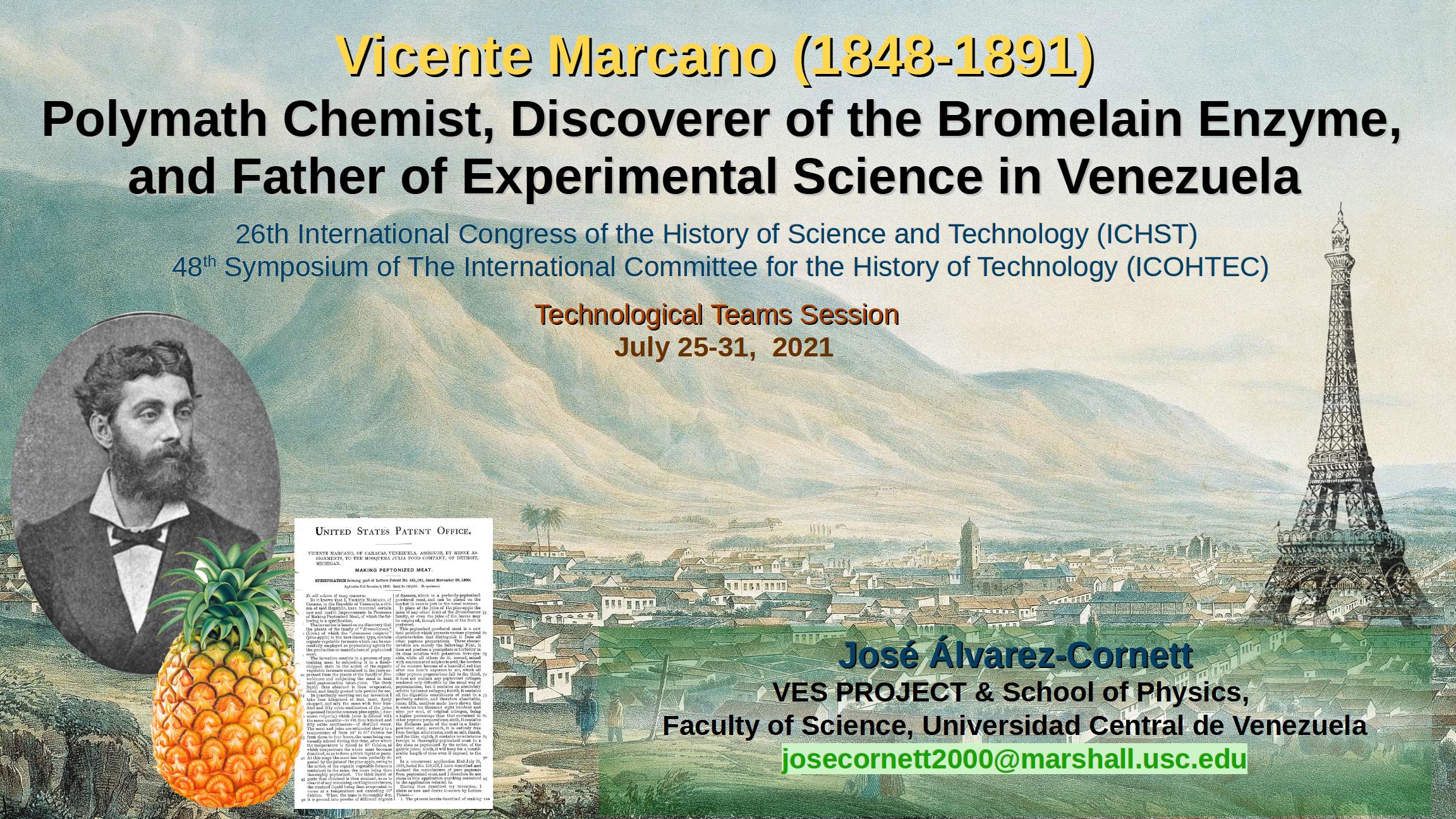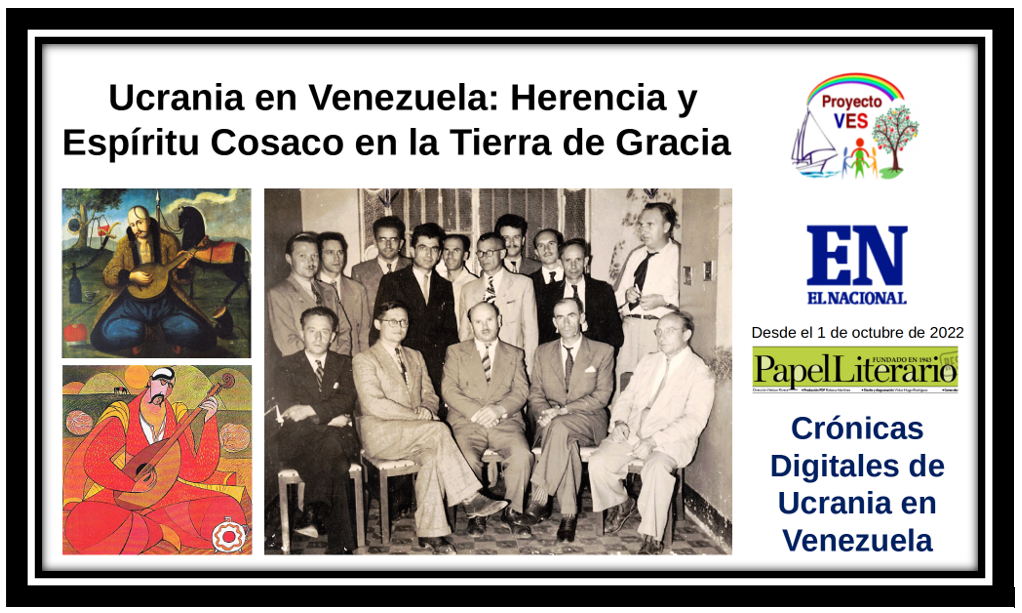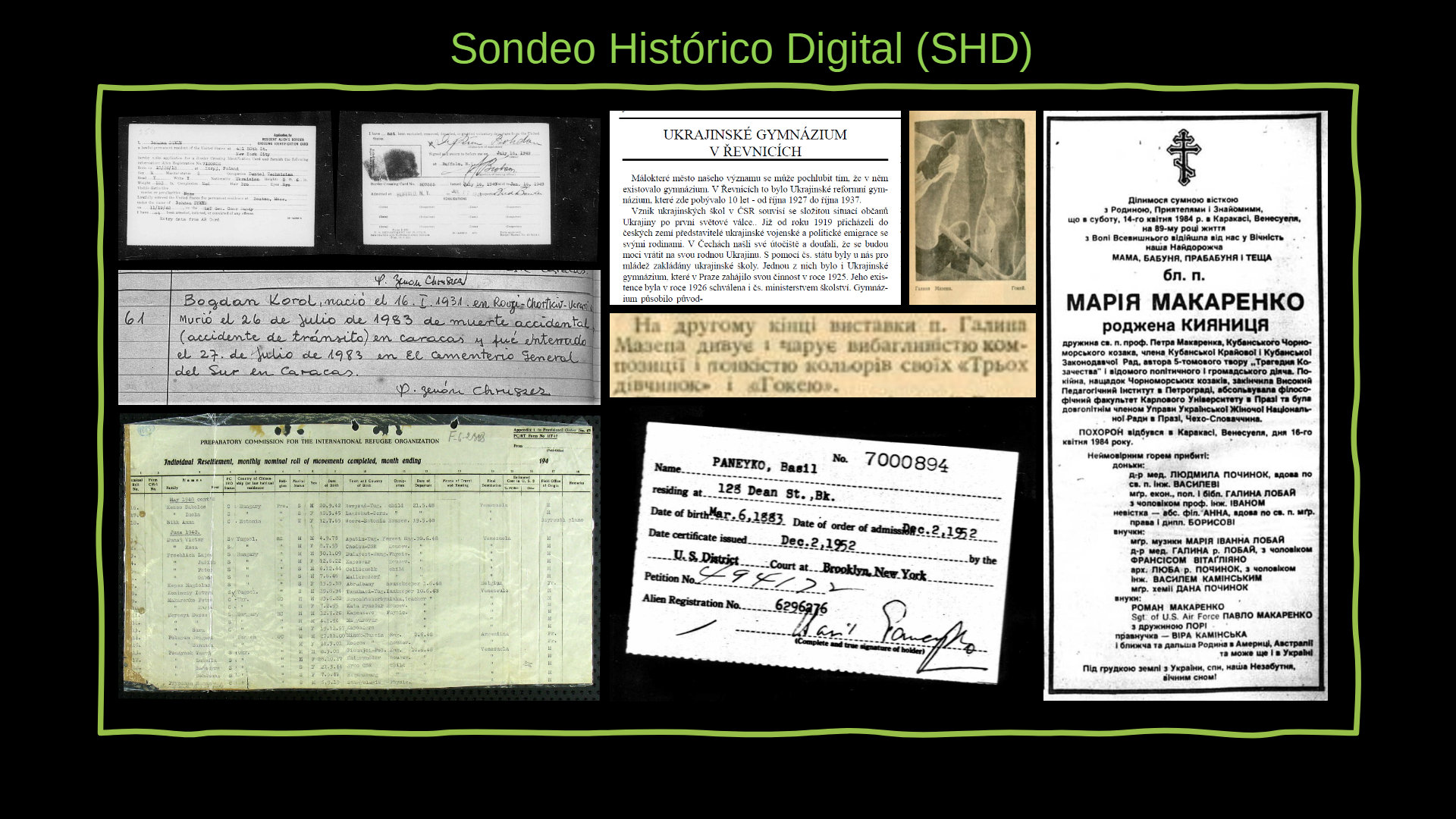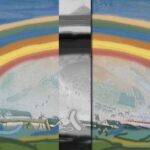VES PROJECT
José Álvarez-Cornett
(@chegoyo en Twitter)
CARACAS (Chegoyo.com)
30/Diciembre/2023
Spanish version, here.
Dear VES PROJECT readers,
Once again, we present a summary of the main activities carried out in VES PROJECT in 2023 to our friends and followers on social media networks. This year, we faced many difficulties, however, we managed to publish and present the results of our research studies. We have several accomplishments to highlight.
Did you all have a Merry Christmas? We hope so. Now, the end of 2023 is approaching fast. We want to wish you all a wonderful year in 2024, with health and prosperity, and that all your wishes and aspirations are fulfilled. Many thanks to all the folks out there who supported us during the year 2023. Without your timely support, it would not have been possible to carry out the VES PROJECT’s lines of research lines.
This year was also complex and full of difficulties. Yet the only thing left to do is to face the obstacles with determination, and optimism and to continue researching and publishing essays to rescue from oblivion the memories of so many people who have been hidden and neglected by the passage of time.
From the beginning, we referred to VES PROJECT as a digital historical archeology project where digital traces are tracked to find digital repositories on the Internet and social media networks about the people under study and then excavate these repositories to rescue gems of information… and it still is! However, this year, our friend Javier Marichal gave us a divine metaphorical image of VES PROJECT, he told us that VES PROJECT is an act of “digital goldsmithing” (orfebrería digital). Thank you, Javier!
Before starting the annual review, I want to stress that carrying out this orfebrería-digital goldsmithing project is a trying process that requires many hours of work, and, since VES PROJECT is an independent research initiative without sources of financing from external entities, either private or official, we need to rely on the financial support from our readers to continue in 2024 researching the case studies that are still pending in our different lines of research which, as you know, mainly explore the life profiles of the Venezuelan techno-scientific migration.
Today, we once again request your generous support to help us continue researching the life profiles of the foreign immigrants who contributed to the development of Venezuelan society and also, of the Venezuelan immigrants in the US, Canada, Europe, and elsewhere in the world who have been successful beyond our borders in the fields of science and technology.
If you wish to support the VES PROJECT again and help us in our efforts to investigate the contributions of foreigners to the scientific and technological development of Venezuela and to discover the successes and achievements in science and technology of the Venezuelan diaspora, you can use PayPal to donate by clicking the DONATE button below.
Ten years of VES PROJECT
Although last year we celebrated our 10th anniversary, this year we continue celebrating. Our independent research initiative VES PROJECT arose spontaneously and without planning in July-August 2012, but it was in late 2013 that we began to communicate in forums and conferences the first results of our research.
In 2023 we celebrate 10 years since the first presentation of our research results. On November 28, 2013, we participated in the Symposium of the Venezuelan Group of History and Sociology of Science (Grupo Venezolano de Historia y Sociología de la Ciencia, GVHSC), held at the University of Carabobo, Valencia, Carabobo State where we presented the case study of the Austrian physicist Juan Gschwendtner that was later published in 2013 in the 2nd issue of the journal Bitácora-e: Revista Electrónica Latinoamericana de Estudios Sociales, Históricos y Culturales de la Ciencia y la Tecnología (Bitácora-e: Latin American Electronic Magazine of Social, Historical and Cultural Studies of Science and Technology.)
With our first paper, we were able to show that it is possible to do historical research using only digitally gathered content. Gschwendtner’s case study began with only three keywords and at the end of the research process, a life profile, illustrated with photographs, was obtained. A key figure in the creation of Hydrometeorology studies in Venezuela who had been forgotten was brought back into full view.
In 2016 VES PROJECT’s six existing lines of research were announced on the poster Digital Chronicles. Our science taking off (Crónicas digitales. El despegar de nuestra ciencia.) The following year, in June 2017, during the VI Congress of INVECOM, VES PROJECT objectives and our work methodology were explained and we presented our achievements obtained up to that date. See, Crónicas digitales de la migración tecnocientífica venezolana: Proyecto VES y Sondeo Histórico Digital (Digital Chronicles of the Venezuelan Techno-Scientific Migration: VES PROJECT and Digital Historical Sounding.)
VES is a Spanish acronym with a double meaning. On one side, it means: They came, educated, and sowed —Vinieron, Educaron y Sembraron— (the seeds of knowledge in Venezuela) and, on the other, it means: They traveled, emigrated, and succeeded—Viajaron, Emigraron y Surgieron.
In the first meaning of VES, the contributions and life profiles of foreign immigrant scientists and engineers in that great land of opportunities that Venezuela once was are investigated. In the second connotation of VES, the life profiles of migrant Venezuelan scientists and engineers who have been successful in the fields of science and technology in their host countries are investigated.
What Happened in the VES PROJECT in 2023?
Next, we will review the main activities and events that happened during this year. The first big news is that at the end of November, the Society for the History of Technology (SHOT) named our principal researcher, José G. Álvarez-Cornett as SHOT GLOBAL COMMUNITY SCHOLAR 2023-2025.
In 2024 the annual SHOT meeting will be a joint conference of two organizations: SHOT and ICOHTEC (The International Committee for the History of Technology). It will be held in Viña del Mar, Chile, July 9-14, 2024. For this meeting, we have already submitted a proposal for a paper titled: Always Present Yet Unseen: Digitally Uncovering the Ukrainian Contributions to Science, Technology, and Culture in Venezuela. We are now waiting to hear from the referees.
Vicente Alonso Fernández
Professor Vicente Alonso Férnandez (1908-2001) is among the founders of the School of Computing at the Central University of Venezuela (UCV). On December 23, the essay on his life was finally published. Vicente Alonso was a lieutenant colonel of the Spanish Navy Marine Infantry, a specialist in geodesy, balloons, and airships. He participated in the Spanish Civil War on the Republican side. Among other combats, he participated in the Battle of Teruel. When the Second Spanish Republic fell, Vicente Alonso went into exile. He first resided in a small town in the French Eastern Pyrenees, then in the Dominican Republic, and since 1945 in Venezuela.
Upon landing in Venezuela, he worked as an insurance sales agent and became involved in the organization of bullfighting events (corridas de toro). Later, he became a secondary school teacher of Mathematics at Colegio América and Colegio San Ignacio de Loyola. At the Central University of Venezuela, he was a professor of Topography and Mathematics in the Faculty of Engineering and Mathematics in the Faculty of Sciences and the School of Geography of the Faculty of Humanities. In 1960 he was part of the newly created Department of Numerical Calculus, which in 1968 became the Department of Computing and in 1975 gave rise to the School of Computing, Faculty of Sciences, Central University of Venezuela (UCV). The essay follows his life from his birthplace in Cáceres (Extremadura) to his final rest in Caracas ninety-three years later. The title of the essay in Spanish is: Vicente Alonso Fernández (1908-2001), de la aerostación a la computación. Un teniente coronel de infantería de la Armada española en la Universidad Central de Venezuela (Vicente Alonso Fernández (1908-2001), from Aerostation to Computing. An Infantry Lieutenant Colonel of the Spanish Navy at the Central University of Venezuela.)
X Jornadas Venezolanas de Historia de las Geociencias (10th Venezuelan Conference on the History of Geosciences)
On December 6 we participated in the 10th Venezuelan Conference on the History of Geosciences with a paper on Ukrainian engineers in Venezuela, highlighting the case of the Ukrainian-Venezuelan geologist Bohdan Korol Tylny (1931-1983).
Our research identified several Ukrainian engineers and other professionals related to engineering or technology: engineers (24); architects (4); surveyors (2); one chemist — Iseer Budowski (1889-1969) who was among the founders of the Faculty of Engineering of the University of Zulia; and one food technology expert, Dr. Nikita Czyhrinciw Konradi (1906-1970).
The specialties of the identified engineers were: Agronomy (1), Civil Engineering (4), Electrical(2), Geodetic (1), Geological (3), Mechanical (2), Mining (1), Chemical (2) and eight engineers whose areas of specialization have not yet been identified. The three geological engineers are Iván Linde (1910-1961), Eugenio Szczerban (1942-), and Bohdan Korol Tylny.
To read the abstract of our research paper(in Spanish), click here. A video of our extended presentation is shown down below.
Asovac Annual Convention and the GVHSC 2023 Symposium
From November 15 to 17, 2023, the LXXIII AsoVAC Annual Convention was held at the Metropolitan University, Caracas. There, on November 16, where we delivered a talk to honor the life of Francisco de Rossón.
Francisco de Rossón was a Spanish poet, a professor of Mathematics and Cosmography, a popularizer of science on radio, television, and the printing press, and a promoter of Astronomy in Venezuela. In the early 1950s, he became a Venezuelan citizen. He was a man of the 20th-century Venezuelan cultural spaces who traveled between two worlds: the literary one with his poetry, and, on the other side, the world of science with Astronomy and the popularization of science and technology. His name deserves to be remembered as that of an immigrant who made Venezuela his own country and contributed strongly to the communication of scientific ideas, especially to children. A summary of the conference (in Spanish) can be read here.
The GVHSC 2023 Symposium
As happens every year, the Symposium of the Venezuelan Group of History and Sociology of Science (Grupo Venezolano de Historia y Sociología de la Ciencia, GVHSC) was held within the AsoVAC Annual Convention (AsoVAC is the Venezuelan Association for the Advancement of Science). This year the LXXIII AsoVAC Annual Convention took place on November 15 and 16 and was held virtually using the Zoom platform. The video papers presented can be watched on the Symposium website.
On November 15th, we presented two case studies about two educated foreigners in Venezuela during the mid-19th century: one was a German medical doctor, and the other was an Italian professor of Agriculture.
The German Physician Dr. Bergholz
Our paper outlined the hitherto unknown life history of Dr. Johann Heinrich Ferdinand Bergholz, born in Rothenbeck on January 27, 1826. At that time, this town belonged to the Duchy of Lauenburg (“Herzogtum Lauenburg”), which was then governed in personal union by the Duke of Holstein who, at the same time, was the King of Denmark. In 1865 Lauenburg and other surrounding areas were integrated into the Kingdom of Prussia.
In 1857, Johann H. Ferdinand Bergholz earned his Bachelor of Medicine and Surgery degree (Licentiaten der Medicin und Chirurgie) at the University of Kiel. He then went to the University of Jena where he received the Doctor of Medicine degree on November 29, 1860. After having practiced his profession in Holstein for about a year and a half, in 1862 Bergholz came to Venezuela and settled in the coastal city of Puerto Cabello, joining the German community there.
In Venezuela, his name was Hispanicized as Juan Fernández Bergholz and with that name, in 1875, he revalidated his German medical degree at the Central University of Venezuela. In addition to practicing the medical profession, Bergholz acted as a local meteorologist reporting his meteorological measurements to the Society of Physical and Natural Sciences of Caracas of which he was a corresponding member. Our research also reports on three publications in German by Bergholz where he presents the results of his medical research. Click here to read a summary of our paper. Below is a video of our extended talk.
The Piedmontese Abbot Domenico Milano
The VES PROJECT has a line of research on the contribution of Italian immigrants to the progress and scientific and technological development of Venezuela. The life of Domenico – or Domingo – Milano was one case within this research line. Milano is part of the Venezuelan History of Art and Agronomy, yet his life has hardly been studied. Most of his vital details —from cradle to grave— were unknown up until now. His life in Italy and his fate after leaving Venezuela had been a total mystery.
From previous research by other authors, it was known that since the end of the first quarter of 1843, Milano had worked as a professor of Lineal Drawing at the Primary Normal School of Caracas that operated within the Colegio de la Independencia of Feliciano Montenegro Colón (1781-1853) and of Topographical Drawing at the Colegio de la Independencia itself. Later, on December 9, 1843, when the Provincial Council of Caracas established a class on “Agriculture, whose lessons will extend to the fields of pastoralism and veterinary medicine,” it appointed Dr. Domingo Milano as preceptor of the class. Then, on November 3, 1843, Milano replaced Fermín Toro (1806-1867) in teaching Botany classes offered by the literary association “Liceo Venezolano.”
Our digital research discovered four new facets of Milano’s life: 1) as a Chancellor-Regent of the Consulate of the Kingdom of Sardinia in Caracas; 2) as a herbalist in Caracas; 3) as a keen observer and critic of the educational system in force in the 1840s; and 4) as a promoter of the idea that technology should be taught to the people. For more details, see the full summary. Below is the video of our talk presented at the symposium.
The Contribution of Italians to Science and Technology in Venezuela
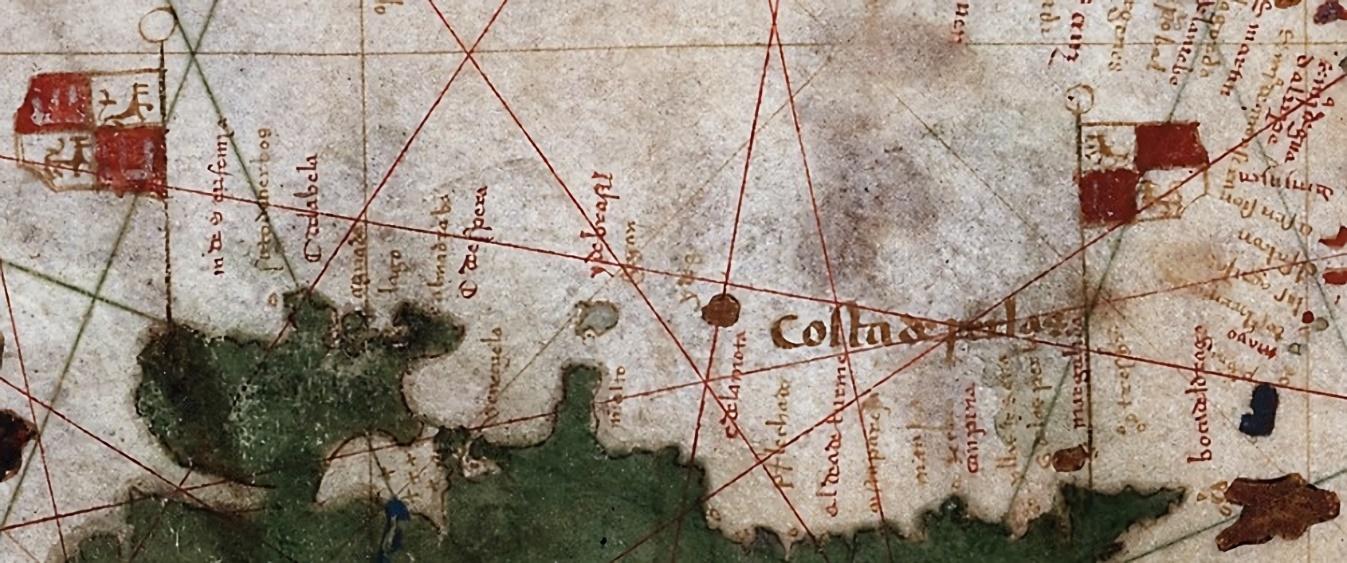
Extracto del Mapamundi de Juan de la Cosa en donde destaca el nombre Veneçuela. Fuente: El original, realizado en pergamino, se conserva en el Museo Naval de Madrid.
The Italian presence in Venezuelan national culture and the arts has been widely studied. Not so their participation in science and technology. On June 1st, on the PRODAVINCI portal, we published the first part of an essay in Spanish titled La inmigración italiana y el progreso científico y técnico en Venezuela (Italian Immigration and the Scientific and Technical progress in Venezuela.)
The essay is divided into three parts: the first highlights the primi passi —first steps— of the Italians through Venezuelan geography and covers the period from the arrival of Christopher Columbus to Paria in 1498 until the end of the 18th century. The second part, on the one hand, presents the case of a group of professionals with Italian roots who took part in the development of scientific, geographical, and medical knowledge; on the other hand, it deals with the technological progress during the Venezuelan 19th century, without naturally forgetting an obligatory mention to some Italian heroes who participated in our War of Independence. The third section outlines the contributions to science and technology made by Venezuelan Italians during the 20th century.
The second part is almost finished, I hope it can be published in the first quarter of 2024. The case of Domenico Milano mentioned above belongs to this second part of the history of Italians in Venezuela during the 19th century.

The Childhood of Vicente Marcano
Vicente Marcano is our first experimental scientist. He is quite an interesting character to study. Many facets of his life have not yet received all the attention they deserve. The case study of Vicente Marcano belongs to the VES PROJECT research line Nineteenth-century Atlantic scientific relations which began with the study The Franco-Venezuelan scientific networks: Vicente Marcano (1848-1891), which is still ongoing.
On June 3rd and 10th, 2013, an essay in two parts titled Vicente Marcano (1848-1891) y su infancia caraqueña (Vicente Marcano (1848-1891) and his Caracas childhood) was published in the Sunday literary paper Papel Literario of the newspaper El Nacional. A brief biography of Marcano bearing the title Biografía de Vicente Marcano (Paris, 1893) was written by his brother, the medical doctor Gaspar Marcano. However, in this text, few data are presented about the first steps of our nineteenth-century polymath. And, to our misfortune, Vicente Marcano did not write his autobiography. However, luck is with us because our great nineteenth-century scientist published a series of short stories in the newspapers of his times allowing us today to glimpse several aspects of his childhood.
Fortunately, Marcano’s narrative was collected by professor Héctor Pérez Marchelli (1939-2021) and published with the title La Cucarachita Martina y otros relatos —La Cucarachita Martina and other stories— (Caracas, 1989). Among the sixteen stories collected is El tesoro del pirata (The Pirate’s Treasure), a short novel with autobiographical features and elements of science fiction.
In our essay Vicente Marcano (1848-1891) y su infancia caraqueña, we recovered the memory of his early years using his stories, Gaspar Marcano’s Biografía of Vicente Marcano, and some archival data. Of course, here we must keep in mind that the narrating voice is always an author’s mask and that the authorial self, although autobiographical, in general, is not necessarily the same as the fictional self, however, in the absence of any documents about his childhood, using his short stories is the best option we have to get a closer look to his early years. To complete the sketch about his childhood period, we used testimonies about the small city of Caracas given by some foreign travelers who visited Venezuela during the time of the Monagas dynasty. Some were published in Harper’s (July 1858).
The first part of the essay can be read here and the second part here. (Note: Within Venezuela’s Internet cyberspace, the web portal of El Nacional is blocked. A VPN service must be used to read its contents).
Other works published within this research line can be downloaded with these links: here and in Bitácora-e. Number 1. Year: 2020. Also, in July 2021, we presented a paper at The 26th International Congress of History of Science and Technology entitled Vicente Marcano (1848-1891), Polymath Chemist, Discoverer of the Bromelain Enzyme, and Father of Experimental Science in Venezuela.
Two papers from this line of research are in draft stage:
“Vicente Marcano (1848-1891), redescubierto. Parte IV. Viajes atlánticos y la red de conocimientos franco-alsaciana”; and “Vicente Marcano (1848-1891), redescubierto. Parte V. Las patentes de la Bromelina.”
Also pending is an article in English about Vicente Marcano to be sent to the Ambix journal. The work for these papers will be carried out next year.
The Contributions of Ukrainian Immigrants in Venezuela
Since October 2, 2022, Papel Literario started to publish on their website our Crónicas Digitales de Ucrania en Venezuela (Digital Chronicles of Ukraine in Venezuela). These chronicles were the end-product of our online research named Ucrania en Venezuela: Herencia y espíritu cosaco en la tierra de gracia (in English, Ukraine in Venezuela: Heritage and Cossack Spirit in the Land of Grace) carried out during the first three quarters of 2022. However, three essays could not be published in 2022 and were published in the first weeks of 2023.
But this year the investigation of this topic was not abandoned. Proof of this is the presentation of our paper La contribución ucraniana a la Ingeniería venezolana. El caso de Bohdan Korol Tylny (1931-1983), geólogo del Ministerio de Minas e Hidrocarburos (in English, The Ukrainian Contribution to Venezuelan Engineering. The Case of Bohdan Korol Tylny (1931-1983), a Geologist of the Ministry of Mines and Hydrocarbons) and our proposal for a paper for the SHOT Viña del Mar event in July 2024.
In Venezuela, during the 20th century, there has been a Ukrainian presence since at least 1925. The life stories of many born in Ukraine lie hidden in the routine life of our cities such as Caracas, Valencia, Cumaná, Maracay, Maracaibo, or Mérida and in some other far corners of our country like Isnotú, for example. Between 1947 and 1951, a select group of Ukrainians displaced by World War II, with Czech or Polish passports or exiled without any official papers, but of Ukrainian origin, emigrated to Venezuela and took up residence, some for only years and others for a lifetime. There were approximately 3,400 to 4,500 people, 865 Ukrainian families, and 40 single individuals who settled in this, as Christopher Columbus called it, Land of Grace.
The Crónicas Digitales de Ucrania en Venezuela (The Digital Chronicles of Ukraine in Venezuela) narrates aspects of the wonderful story of a group of Ukrainian immigrant families who considered Venezuela as a land of opportunities. The three essays that were published in early 2023 are:
Halyna Mazepa, la artista que vino de Ucrania, Papel Literario, El Nacional, febrero 19, pp. 7-8, 2023.
Crónicas Digitales de Ucrania en Venezuela: La Ñapa, Papel Literario (Web), El Nacional, febrero 11, 2023.
Crónicas Digitales de Ucrania en Venezuela. Episodio 12: Halyna Tricolor. Parte 2, Papel Literario (Web), El Nacional, enero 21, 2023.
With the following link, you can access the other twelve published chronicles (called Episodes). The results of this research investigation are supported by hundreds of digital fragments in the form of photographs, records of births and deaths, immigration documents, lists of movements of people displaced by the Second World War, obituary notices, and articles in magazines and newspapers in several languages obtained by the application of our Digital Historical Sounding (DHS) strategies.
Research in progress and other matters
Foreigners settled in the Land of Grace
In the last months of 2021, we worked on an essay for a book about science and technology in Venezuela during the 20th century. In our work, entitled, Extranjeros afincados en la Tierra de Gracia (Foreigners settled in the Land of Grace), we addressed the influence of foreign immigration on science and technology in Venezuela during the 20th century with an emphasis on several immigration currents that are rarely considered in the context of the scientific and technological development in Venezuela. The essay was also focused on the physical-mathematical sciences including engineering.
This book should have been published in 2023. However, in the middle of 2023, the book’s editor, following instructions from the publishing house, returned all the essays to the group of co-authors for a second review of the chapters that were submitted in early 2022.
Hopefully, in 2024, Fundación para la Cultura Urbana (the Foundation for Urban Culture) will finally publish this contribution to the knowledge of 20th-century Venezuelan society. The book is part of the series El Siglo XX Venezolano (The Venezuelan 20th Century).

Huellas, Ashiato, Paulkhuna
The essay, Huellas, Ashiato, Paulkhuna. La impronta asiática en la ciencia y la tecnología en Venezuela durante el siglo XX (in English, Huellas Ashiato, Paulkhuna. The Asian Imprint on Science and Technology in Venezuela During the 20th Century) began to be written in early February 2022 and continued to be written during the months of March and April of that year. This year, only a few hours were dedicated to validating some aspects of the essay. Although this work is quite developed, it is not yet ready for publication.
Its main purpose is to make the Asian contribution to science, technology, and biomedical research in Venezuela visible. Since 1959, Asian immigrants from Bangladesh, China, Korea, Hong Kong, India, Japan, Malaysia, Pakistan, and Taiwan have been contributing to science, technology and medicine in Venezuela. However, since they have not been collectively assembled, their imprint on these areas in Venezuela has been overlooked.

Futures Studies in Venezuela
Venezuela is a country of great contrasts and contradictions. As a society, we pay more attention to our past than to our future. At the beginning of December 2021, at the Symposium of the Venezuelan Group of History and Sociology of Science (GVHSC), held during the LXXI Annual Convention of the AsoVAC, we presented VES PROJECT new line of research: A History of the Images of the Future in the Venezuelan Society (1779-1981). Our paper was called Pinceladas del amanecer de los Estudios de Futuros en Venezuela (in English, Brushstrokes of the Dawn of Futures Studies in Venezuela). In it, we presented a preview of the results found for the period from 1961 to 1981.
James Dator, a futurist and retired professor at the University of Hawaii, suggested that we should write an article in English on this subject matter (“That —he said— is a fascinating story and I absolutely agree it needs to be told and that you are the person to do it”). In 2023, we began writing an early draft but the time dedicated to other activities prevented further work on this paper. The drafting of this paper will be taken up again in 2024.
Arte, Ciencia y Naturaleza en el Nuevo Mundo
We are interested in the communication of the history of science to broad audiences. In 2021 we began a series of articles for Revista Persea under the general title Arte, Ciencia y Naturaleza en el Nuevo Mundo (Art, Science, and Nature in the New World). It is a series of three articles, two of which were published in that year. There remains a third article. Its writing is quite advanced, but in 2023 it could not be finished and it was left for 2023. Unfortunately, this year there was no time to finish it either. The third part is now left for 2024.
22/05/2021
ARTE, CIENCIA, NATURALEZA Y EL NUEVO MUNDO. PRIMERA: ARTE, CIENCIA, NUEVO MUNDO Y PAISAJISMO
20/06/2021
ARTE, CIENCIA Y NATURALEZA EN EL NUEVO MUNDO. SEGUNDA: LOS ORÍGENES DE LA PINTURA DE PAISAJES
Caribe Nipponica III
Sadly, this year we could not finish writing Caribe Nipponica. Part III. The third part of this essay aims to present the saga of Japanese in the Venezuelan Caribbean Sea. In 2019, we began the series (in three parts) named Caribe Nipponica. This coming year we will surely work on the third installment. Parts I and II can be read here: Caribe Nipponica I & Caribe Nipponica II.
On the Caribe Nipponica line of research, we also have another pending article, which we plan to send to an Argentinian journal for publication. The work is tentatively titled Caribe Nipponica: los japoneses en aguas territoriales de Venezuela (1955-1985) (in English, Caribe Nipponica: the Japanese in the territorial waters of Venezuela (1955-1985).)
Professor Jan Deketh (1904-1969)
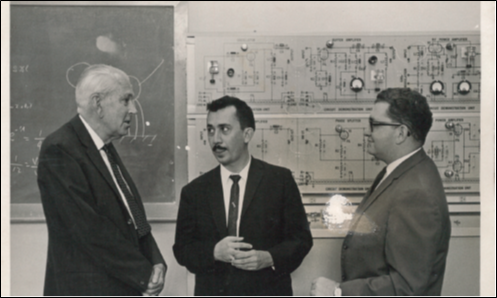
From left to right, electrical engineers Jan Deketh, José Suez Gutiérrez, and Cecilio Antonio Hidalgo Galíndez (UCV, 1964) talking at the Centro de Estudios para Técnicos de Telecomunicaciones (CETT). Source: Courtesy of the late Engineer José Suez.
Our essay on Professor Jan Deketh is not ready yet. Between 1959 and 1970, several Dutch telecommunications experts from the International Telecommunications Union (ITU) came to work in Venezuela. Among them, the name of Dutch engineer Jan Deketh stands out. He lived in Caracas between 1959 and 1969. His activities as a telecommunications engineer are one of many contributions made by Netherlands citizens to the technical and scientific development of Venezuela. (This a topic that has received scant attention.) This essay is also almost finished, but it is not ready yet. 
Other topics (Otros temas)
Our Digital Historical Sounding (DHS) methodology requires a long-term vision and plenty of patience. We have to work simultaneously with many case studies because one never knows when social networks will respond positively to our requirements. Thus, research progress in VES PROJECT is continuous (we constantly receive or find new data, we analyze and evaluate previous data, and we study the corresponding historical background), but it is not always possible to publish what has already been collected during the year due to problems with data consistency or a lack of some key piece of data, or due to difficulties to access an important digital repository or because we still do not understand the historical background.
The study case of the Trinidadian-Venezuelan petroleum engineer Blair Chan (with roots in the Chinese immigration to Trinidad — we think this should be the case, but we have not yet been able to prove it) is still ongoing. We also continue to study the genesis of Bioengineering in Venezuela. Likewise, we keep delving into a discovery related to 19th-century Venezuelan Astronomy. In 2024, we want to communicate this research case in 2024 (yes, we said that we would do it in 2021, then in 2022, and in 2023, but it has not been possible).
Due to a lack of time, there has been little progress in the study of the activities of Brazilian physicists and mathematicians in Venezuela and it has not been possible to further our research on the participation of women in the development of intellectual property in Venezuela beyond the work already published in Spanish here and here.
Likewise, a project to write a paper in English on Venezuelan Female STEM Leaders in North America has been halted. The idea of the Venezuelan Female STEM Leaders in North America project is to research and write about the life profiles of several Venezuelan women in the field of physical and mathematical sciences—broadly understood to include chemistry and computing—who live and work in the US and Canada.

Review’s Ends (Fin del recuento)
The review of VES PROJECT activities in 2023 ends here. Again, we send you our best wishes for a Prosperous and Healthy Year 2023. A warm virtual New Year’s hug for you and your family.
Happy New Year!
¡Feliz Año Nuevo!
Please, Chip in Support of the VES PROJECT!
If you wish to support the VES PROJECT again and contribute to our efforts to investigate the history of the contributions of foreign immigrants to the scientific and technological development of Venezuela and to discover the successes and achievements in science and technology of the Venezuelan diaspora abroad, you can use PayPal to donate by clicking on the DONATE button shown below.
By clicking “DONATE” you can support the VES PROJECT.
___________
SOBRE EL AUTOR: José G. Álvarez Cornett ( @Chegoyo en Twitter )
Miembro de World Futures Studies Federation y del grupo “Physics and Mathematics for Biomedical Consortium“. Nombrad0 por la Society of History of Technology (SHOT) como SHOT GLOBAL COMMUNITY SCHOLAR (2023-2025).
@Chegoyo 2023
